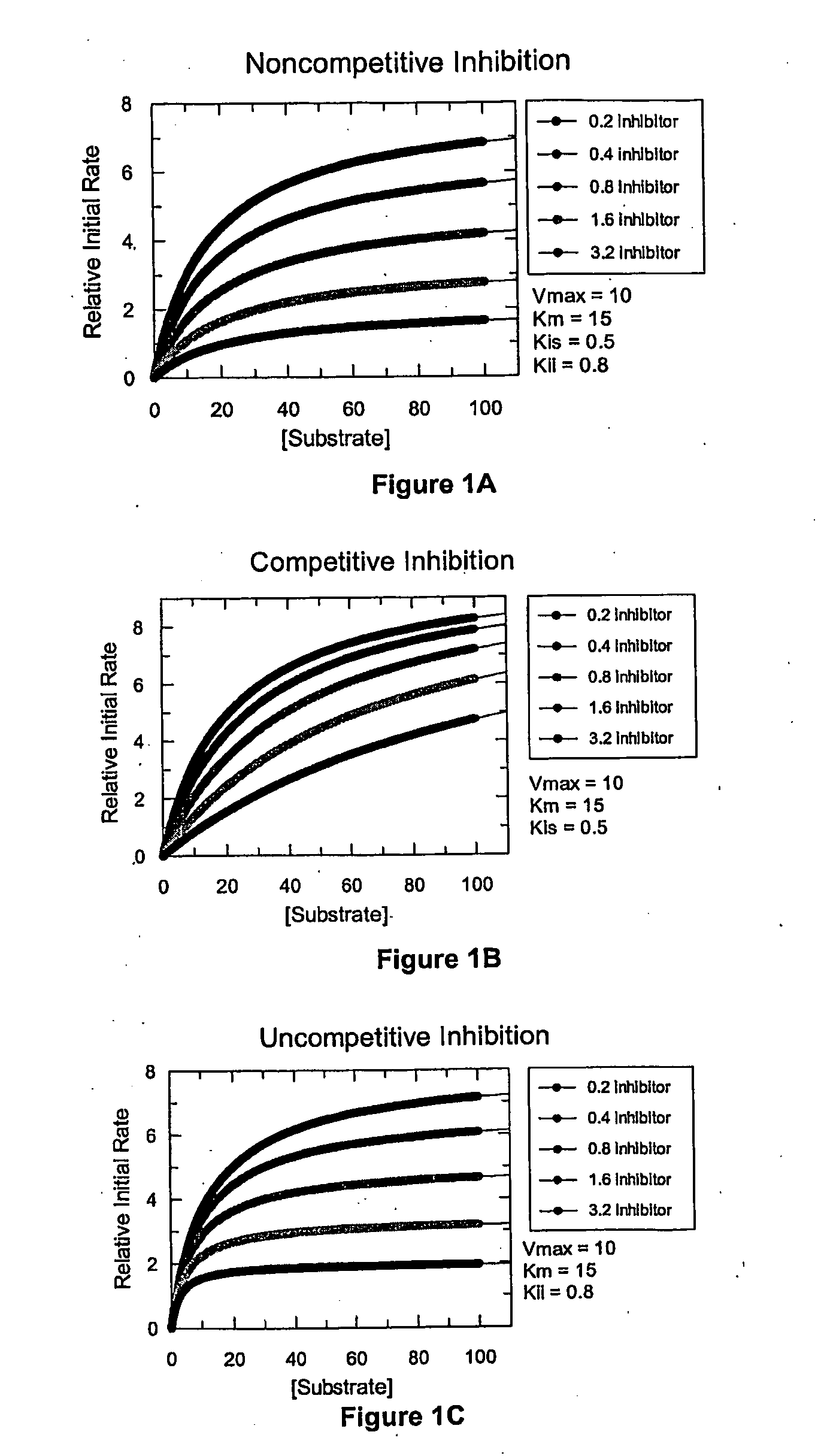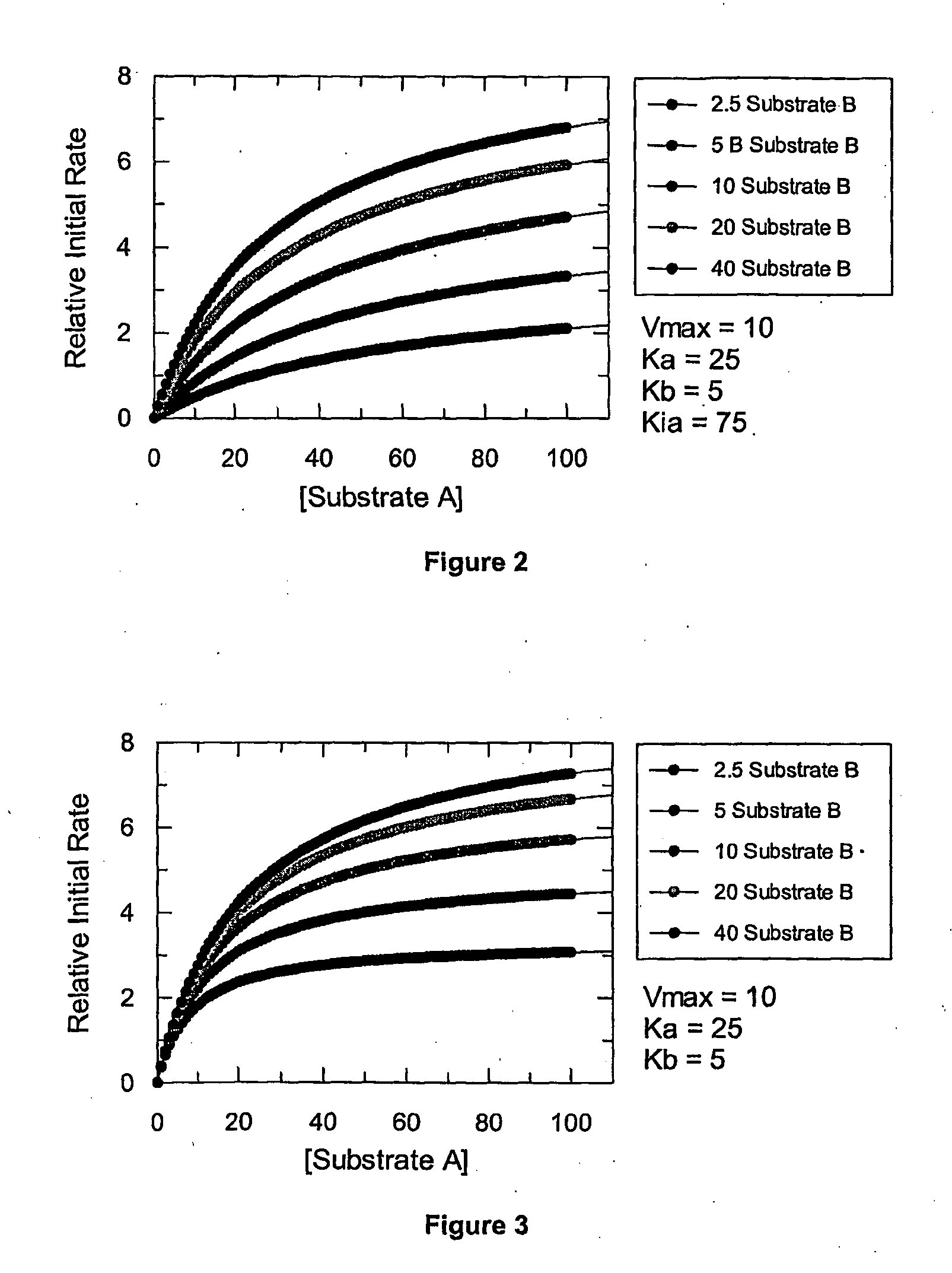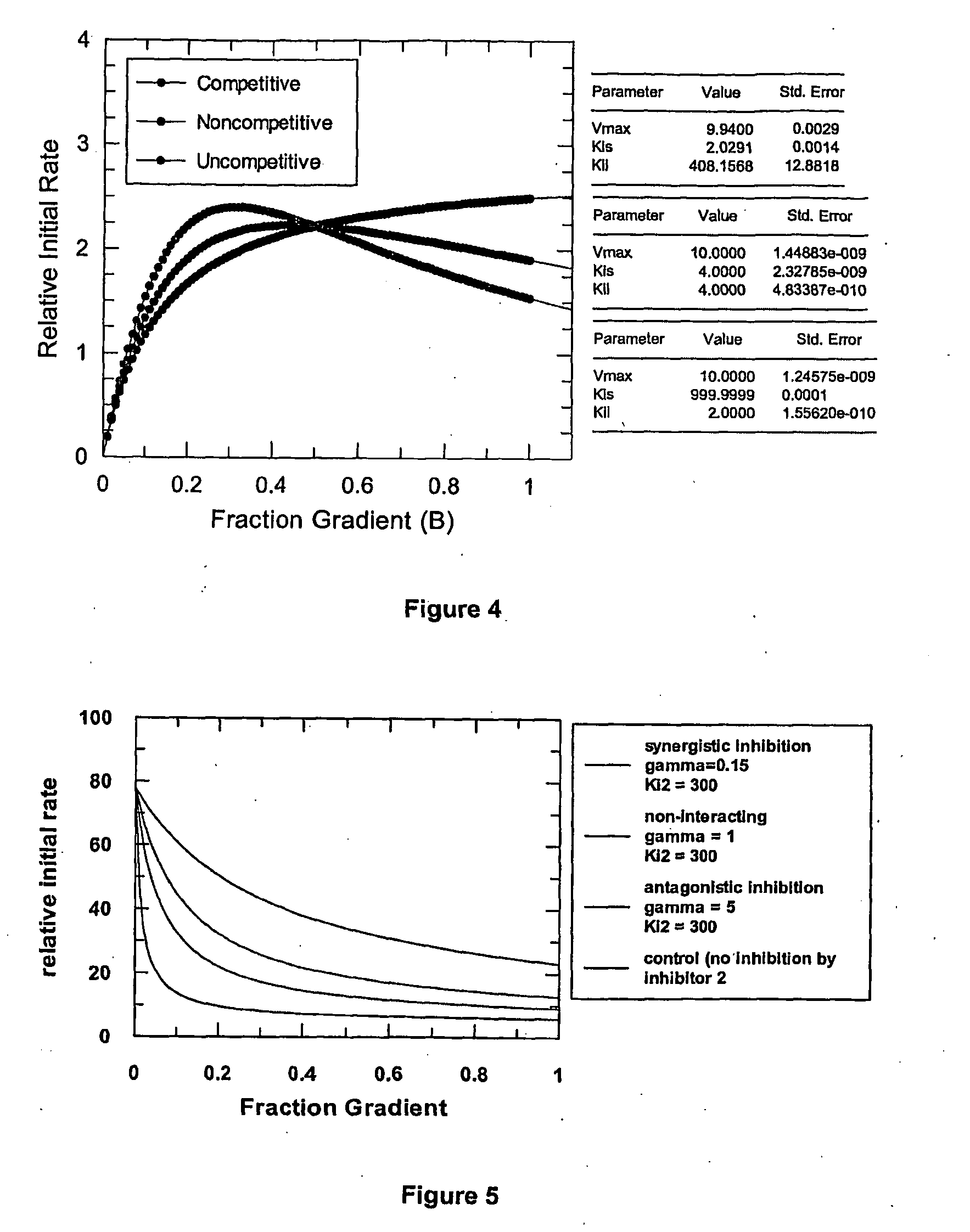Methods for characterizing biological molecule modulators
a biological molecule and modulator technology, applied in biochemical apparatus and processes, laboratory glassware, instruments, etc., can solve the problems of inability to use continuous gradients, limited concentrations, and inability to mix concentration gradients and particularly continuous gradients
- Summary
- Abstract
- Description
- Claims
- Application Information
AI Technical Summary
Benefits of technology
Problems solved by technology
Method used
Image
Examples
example 1
Oxalate Vs. NAD+ on Microtiter Plates
[0403]The inhibition mechanism of oxalate with respect to the substrate NAD+ yields an uncompetitive profile as deduced from conventional orthogonal analysis (see Lien L V, Ecsedi G, Keleti T. (1979) Acta Biochim Biophys Acad Sci Hung. (1-2); 11-17).
[0404]Determination of the mechanism of inhibition by the inhibitor oxalate with respect to the substrate NAD+ against the enzyme rabbit muscle lactate dehydrogenase (LDH) using a microtiter plate to generate individual step concentration gradients was attempted. FIG. 47 is a graph showing the results of the experiment.
[0405]As FIG. 47 demonstrates, using known methods with microtiter plate step concentration gradients generates limited data, making a determination of mechanism of inhibition very difficult. FIG. 47 graphs both simulation curves for uncompetitive and noncompetitive inhibition. As can be seen, the limited data and the similarity of the uncompetitive and noncompetitive curves makes it di...
example 2
Oxalate Vs. Lactate on Microtiter Plates
[0406]An attempt to determine the mechanism of inhibition by the inhibitor oxalate with respect to the substrate lactate against the enzyme rabbit muscle LDH using a microtiter plate to generate individual step concentration gradients was attempted. FIG. 48 is a graph showing the results of this experiment.
[0407]FIG. 48 appears to indicate the oxalate is a competitive inhibitor against lactate as a substrate, as reported previously (see Lien L V et al. (1979) Acta Biochim Biophys Acad Sci Hung. Vol. 1-2, pp. 11-17. Amongst the three aforementioned inhibition mechanisms, this is the only model that yields a hyperbolic profile, and as such is the only one that can be used to confidently deduce mechanism. However, again, the limited data prevents determination of the mechanism of inhibition with certainty.
examples 3 and 4
[0408]The results from Examples 1 and 2 demonstrate that data from microtiter plates is too coarse to determine the mechanism of inhibition of an inhibitor with certainty. Although a competitive mechanism of inhibition can be presumed with some systems, distinguishing noncompetitive from uncompetitive inhibition is not possible unless the variance in the data is kept very small. In contrast, as demonstrated below, the novel methods disclosed herein utilizing a continuous variation of the ratio, B, produces high-resolution data, permitting determination of potency and discrimination of inhibitor mechanisms, including discriminating noncompetitive from uncompetitive inhibition mechanisms.
[0409]A fluorescence-coupled enzyme assay was developed using a microfluidics system described herein for creating a continuously variable concentration gradient to monitor the reduction of NAD+ by the enzyme LDH to give a fluorescent end product. This system was then adapted to measure potency and de...
PUM
| Property | Measurement | Unit |
|---|---|---|
| reaction rates | aaaaa | aaaaa |
| concentrations | aaaaa | aaaaa |
| concentration | aaaaa | aaaaa |
Abstract
Description
Claims
Application Information
 Login to View More
Login to View More - R&D
- Intellectual Property
- Life Sciences
- Materials
- Tech Scout
- Unparalleled Data Quality
- Higher Quality Content
- 60% Fewer Hallucinations
Browse by: Latest US Patents, China's latest patents, Technical Efficacy Thesaurus, Application Domain, Technology Topic, Popular Technical Reports.
© 2025 PatSnap. All rights reserved.Legal|Privacy policy|Modern Slavery Act Transparency Statement|Sitemap|About US| Contact US: help@patsnap.com



